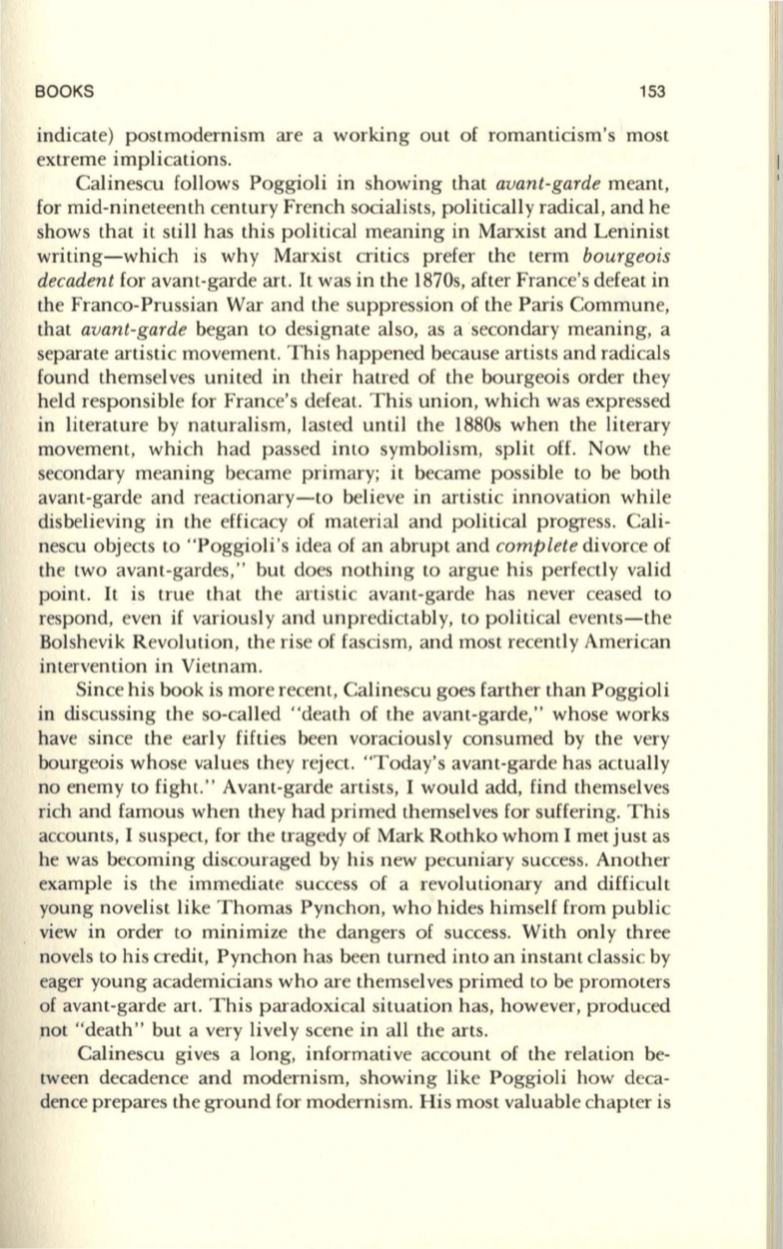
BOOKS
153
indicate) postmodernism are a working out of romanticism's most
extreme implications.
Calinescu follows Poggioli in showing that
avant-garde
meant,
for mid-nineteenth century French socialists, politically radical, and he
shows that it still has this political meaning in Marxist and Leninist
writing-which is why Marxist critics prefer the term
bourgeois
decadent
for avant-garde art.
It
was in the 1870s, after France's defeat in
the Franco-Prussian War and the suppression of the Paris Commune,
that
avant-garde
began to designate also, as a secondary meaning, a
separate artistic movement. This happened because artists and radicals
found themselves united in their hatred of the bourgeois order they
held responsible for France's defeat. This union, which was expressed
in literature by naturalism, lasted until the 1880s when the literary
movement, which had passed into symbolism, split off. Now the
secondary meaning became primary; it became possible to be both
avant-garde and reactionary-to believe in artistic innovation while
disbelieving in the efficacy of material and political progress. Cali–
nescu objects to "Poggioli's idea of an abrupt and
complete
divorce of
the two avant-gardes," but does nothing to argue his perfectly valid
point. It is true that the artistic avant-garde has never ceased to
respond, even if variously and unpredictably, to political events-the
Bolshevik Revolution, the rise of fascism, and most recently American
intervention in Vietnam.
Since his book is more recent, Calinescu goes farther than Poggioli
in discussing the so-called "death of the avant-garde," whose works
have since the early fifties been voraciously consumed by the very
bourgeois whose values they reject. "Today's avant-garde has actually
no enemy to fight." Avant-garde artists, I would add, find themselves
rich and famous when they had primed themselves for suffering. This
accounts, I suspect, for the tragedy of Mark Rothko whom I met just as
he was becoming discouraged by his new pecuniary success. Another
example is the immediate success of a revolutionary and difficult
young novelist like Thomas Pynchon, who hides himself from public
view in order to minimize the dangers of success. With only three
novels to his credit, Pynchon has been turned into an instant classic by
eager young academicians who are themselves primed to be promoters
of avant-garde art. This paradoxical situation has, however, produced
not "death" but a very lively scene in all the arts.
Calinescu gives a long, informative account of the relation be–
tween decadence and modernism, showing like Poggioli how deca–
dence prepares the ground for modernism. His most valuable chapter is


